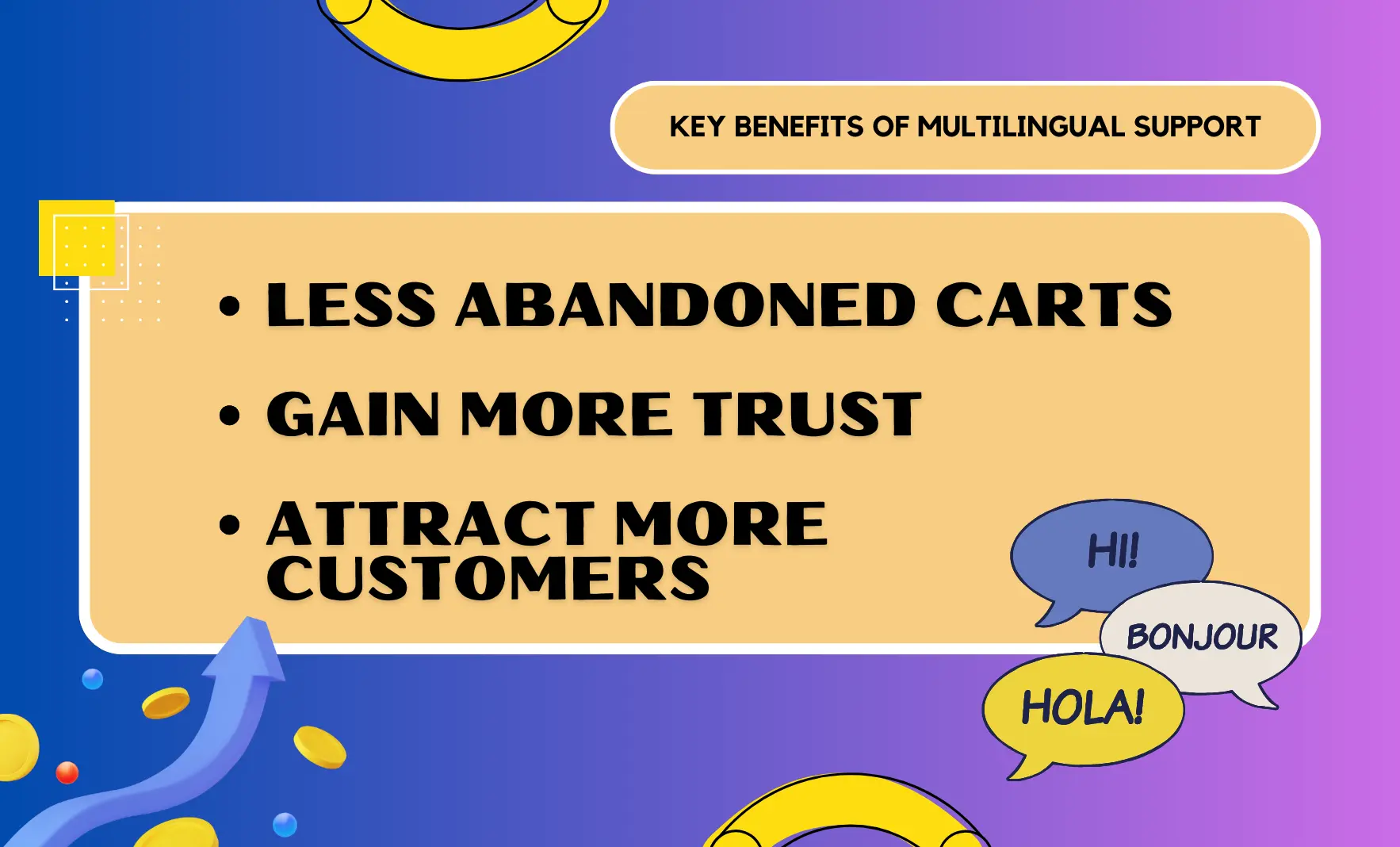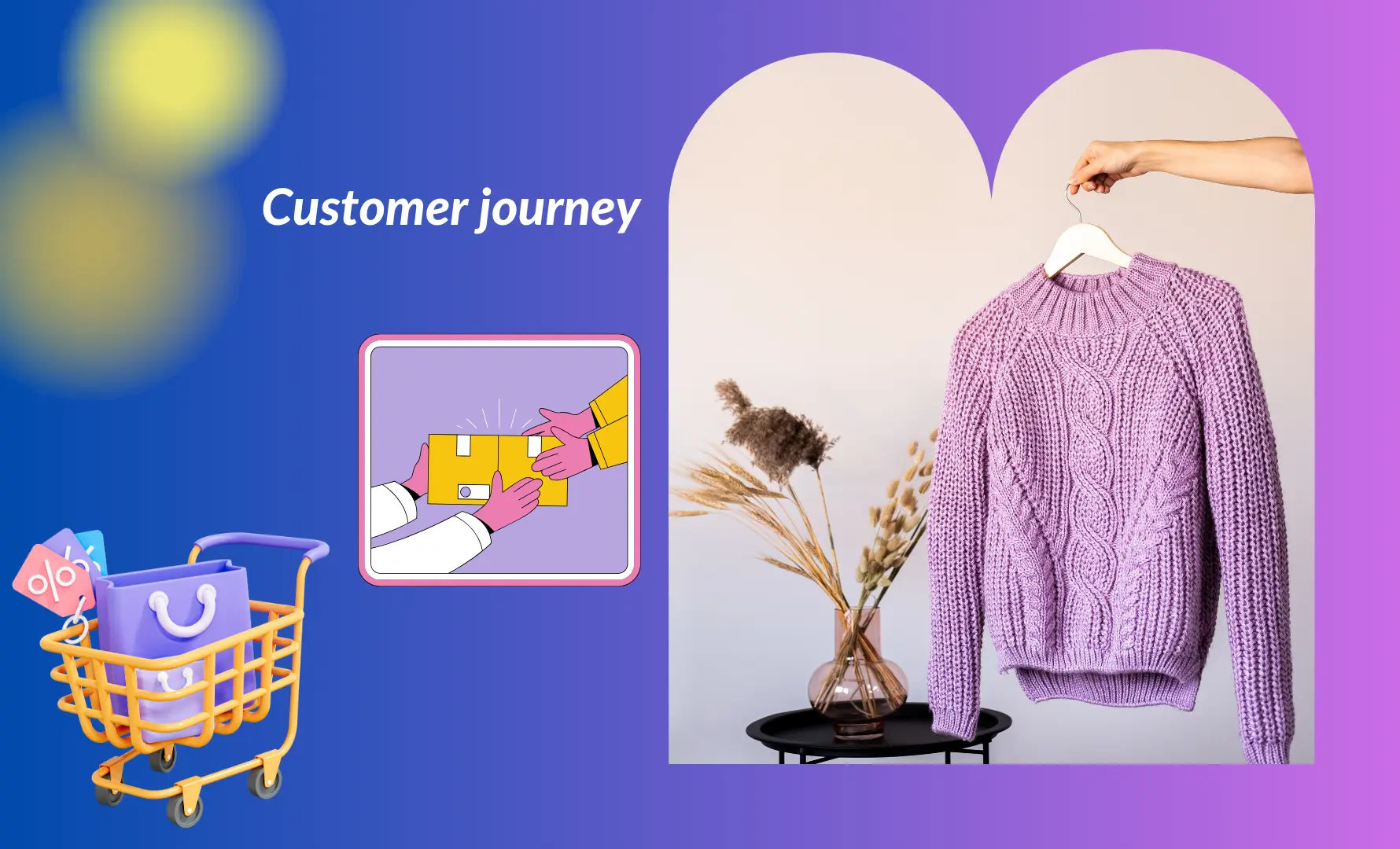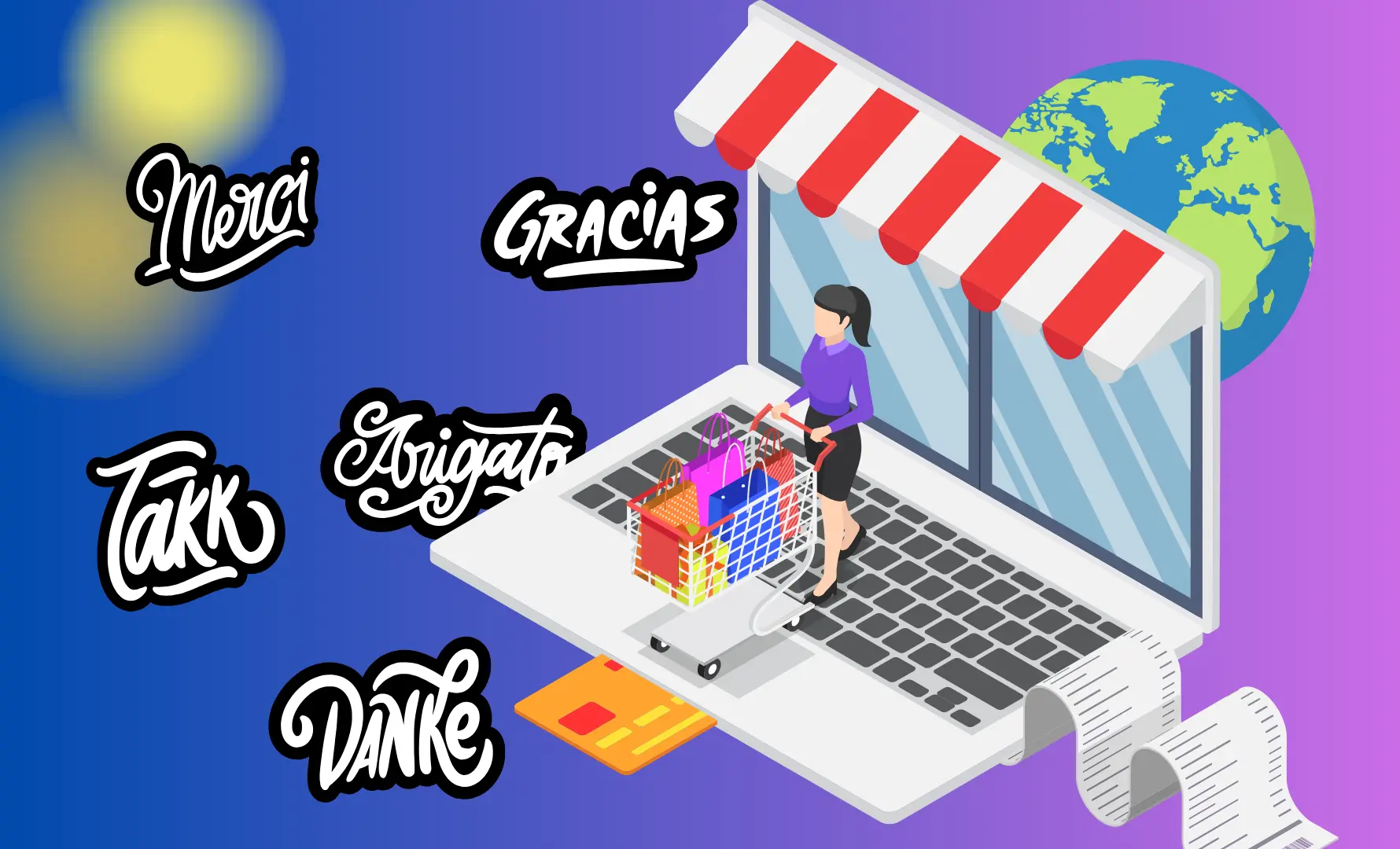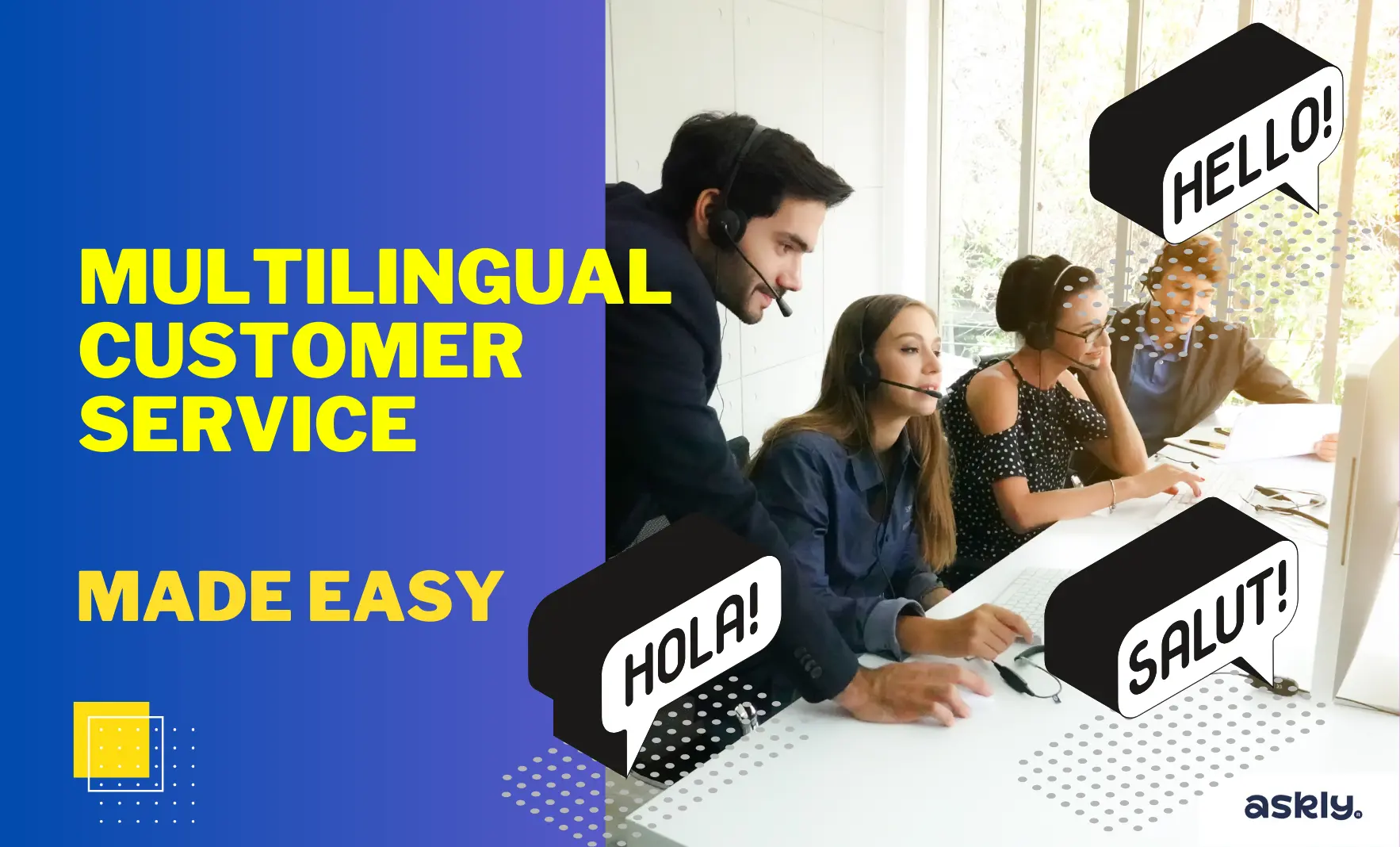How To Implement Multi Language Customer Service And How It Can Transform Your Business

Sandra Roosna
Askly CEO & Founder
Picture this:
You're looking for a specific product online.
You find the perfect one, but you're not sure about a few things.
So, you contact their customer service support (CS) and find out that they don't speak your language.
On top of that, their English is poor and doesn't build trust either.
You close the website and buy the product from another website.
This annoying scenario is much more common than you think among online shoppers.
And some of your clients might be experiencing it right now.
So how can you avoid losing international customers when 76% of them don't trust you?
The solution: turn your customer service multilingual with modern technologies.
In this blog, we will walk you through what multilingual customer service is and how to make it work with ease, with almost zero investments and no hiring.
What Is Multilingual Customer Service?
Simply put, it's your opportunity to widen the horizon of your business.
Or in different terms, multilingual customer service is the customer support that an online store provides in more than one language.
The goal of multilingual support is to:
- Break the language barriers.
- Gain more trust.
- Attract more customers.
- Keep costs stable.
- Provide fast support in the customers' preferred language with existing resources.

Now, if you want to get the benefits of multilingual customer service, but don't know where to start…
Here are a few helpful and practical tips to get you started:
- Hire employees who are fluent in different languages.
- Use complex automatic translation software.
- Partner with a company that specializes in multilingual customer service.
- Use a live chat with built-in seamless real-time translation
Cost-efficient Multi Language Customer Service
Now, this is important:
Stop wasting your multilingual customer service time on replying to people who will most likely never become your customers.
Inefficient customer service not only wastes your time, but also a lot of money.
But let's see it through a real-life example:
Let's say you have two customer service agents, and their salary is €4,000 including taxes.
Now, if 80-90% of their time they reply to customers who don't complete their purchase, you're wasting between €3,200-3,500/month.
Or around €40,000/year.
On top of that, you also have to add abandoned carts, which are sales that never went through.
And on average, in e-Commerce, the abandoned cart rate is 74%.
If your average cart size is €100 and you make about 500 transactions per month, your revenue is €50,000/month.
However, if we include the average abandoned cart rate (74%), your lost revenue is €142,000/month.
So, in total, you lose €142,000 + €3,500 every month just due to an inefficient customer service setup.
Different Support Channels Compared
Not all customer service channels are created equal.
And not all support channels provide you with the same opportunities to service customers efficiently and without language barriers.
So, to put things into perspective, here's a comprehensible table that compares the primary customer support channels:
| ROI | Avg Response Time | Cost | Effort | Business Impact | |
|---|---|---|---|---|---|
| Live Chat | High as it provides fast and accurate assistance | <5 minutes | Low | Low | High as customers stay on your website |
| Email Support | Medium | Up to 48 hours | Medium/High depending on the number of support agents, tools and expertise | Medium/high | Low 80-90% never return to your website |
| Phone Support | Medium/High | <1-minute | Medium/High depending on how many support agents you hire and their expertise | High cost to hire and educate agents | Medium 50-60% stay on your website |
| FAQs | Low | Instant | Low | Low | Low |
| Knowledge Base/Help Center | Medium | Instant | Medium/High depending on whether you create sufficient articles or you hire an external writer/s | Medium/High | Medium |
| Video Tutorials | Medium/High | Instant | Medium/high, depending on whether you make them or hire someone else. | Medium/high | Low/Medium |
| Chat Bots | Medium/High | Instant | Medium/High depending on how accurately you want to train your chatbots | Medium | Low/Medium Risk of losing customers, getting bad reviews |
| Social Media Support | Medium/High | 1 to 6 hours | Medium/high depending on how many support agents you need and how experienced they are | Medium/High | Medium 50-70% never return to your website |
The Key Benefits of Multilingual Support
Think of your customer's buying process as a journey.
And as a business owner, you have to ensure this journey goes smoothly all the way through.
Especially if you want them to become loyal customers and come back to purchase more.
Before and after your customers buy your product, they might have questions about it.
They might need help in general, or they might have encountered some issues.

Your job is to help them with all their inquiries.
And if they're international clients, you have to provide customer support in their main language.
This way, you ensure that all your international clients get the same level of support.
And none of them gets frustrated.
But what are the key benefits of multilingual support?
Here are the most crucial ones:
-
Avoid losing customers: 96% of online consumers say that customer service is important in their choice of loyalty to a brand.
So, you can imagine how many potential customers you might be losing when you don't provide multilingual customer service.
-
Easier customer communication: No one likes to speak in a language they are not proficient in, especially when buying a product online.
You should make the customers' buying journey as seamless as possible, and when your clients can't communicate with your customer support, they get frustrated and might leave your website right away.
-
Increased customer retention and profits: Just a 5% increase in retention rates can boost your profits by more than 25%.
And what's one of the best ways to boost retention rates? You guessed it, providing top-notch multilingual customer service.
-
Strengthen customer loyalty and satisfaction: What's better than having more customers for your business? Having more recurring and loyal clients.
Providing multilingual customer service to your prospects helps you get more loyalty and satisfaction from them.
In fact, 70% of online users felt loyal to businesses that provide multilingual support.
-
Increased Net Promoter Score (NET): The NET score is the likelihood that a customer will recommend your business to other people.
A recent study found that 94% of customers who receive support in their native language are more likely to recommend your business.
-
Fewer abandoned carts: Abandoned carts are a big issue, especially for online stores.
In fact, 60-80% of carts get abandoned on average. But, with proper multilingual customer service, you can get as much as 24% fewer abandoned carts.
-
Deeper customer understanding: By providing support in multiple languages, you can understand your international clients' needs and access more feedback.
This data is invaluable to make your product better and improve your service overall.
-
A competitive advantage: In today's online market, customers have almost unlimited choices.
So, if your website doesn't offer complete multilingual customer service, your international clients can hop to your competitors in a heartbeat.
Consumers are no longer loyal to just one brand, and they're not afraid to switch companies if they're not happy with what you provide.
Cart Abandonment without Multilingual Customer Service

Generally speaking, multilingual customer support is common in most industries.
However, due to the specific nature of the audience of some of these industries, there's a higher chance you'll find multilingual support:
- Online retailers and eCommerce: By having multilingual support, you open your store to the international market, which can drastically increase your sales.
- Travel and hospitality: This industry is full of international customers who can, for example, rent your AirBnB. For that reason, multilingual customer service is an absolute must.
- Medical and healthcare: Health organizations are required, by law, to offer HIPAA-compliant multilingual medical support to their patients.
- Tech: While the tech industry often offers multilingual support, it's not as prevalent as the other three examples. In fact, most consumers in the Saas/Tech audience can reliably speak and understand English.
Providing Multilingual Customer Support
One thing is having multilingual support on your website.
But providing high-level multilingual customer service is a different story.
For that reason, here are a few key aspects you should get right to ensure top-notch multilingual customer support:
Hire local support agents: Not only will local support agents know all the nuances of their language but, they will also know the ins and outs of the culture.
Both are crucial to help your potential customers relate better and have an easier time overall.
Match your operating hours: Have you ever shopped on an online store only to find out their customer support is available at weird hours? The reason for that is time zones.
Suppose you want to provide a high-quality multilingual support service.
In that case, you have to take your international customers' time zones into account if you want to avoid excessive inquiries, frustration, and extended response times.
High-quality translation: Your website should have a translated version for each of your audiences, but make sure the translation is on point.
Providing a bad translation might be even worse than not providing it at all because it shows that you're putting in half the effort and don't actually care about your international customers.
Implement a multilingual knowledge base: Most of your customers' problems or questions are very similar.
If you have the data, you can provide a knowledge base of articles that go over the most common issues clients face with your product.
This way, you can solve most clients' issues without them even interacting with your customer support agents.
Prioritize response times: The most important metric when it comes to customer support is response time.
The faster your agents can respond, the easier it'll be to get the sale.
If you make your customers wait for too long, they will get frustrated and leave your website right away. While responsiveness is crucial, you also have to make sure the replies are accurate, and one of the best yet easiest and cheapest ways to achieve that is by providing a live chat.
Unlocking Your eCommerce Growth

If you have an online store, you probably also have lots of international visitors there.
And if you want to turn them into your loyal customers, you have to nail your multilingual customer service.
The best example of software that gives your team multilingual superpowers is Askly.
Askly is a live chat that opens to every visitor in their native language without any development.
And only when the languages do not match, automated and seamless real-time translation applies.
Multilingual customer service can help your business widen the horizons and speed up the growth in the most cost-efficient way.
Now, we want to hear your thoughts on this.
Have you tried implementing multilingual support on your website?
What's the main issue you've been facing?


